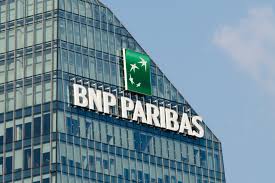By Akanimo Sampson
With the global shipping industry having just a few months, according to Nicolas Parrot of BNP Paribas, to comply with its new air quality rules, is the sector ready to navigate and finance a more sustainable future?
BNP Paribas which has strong roots anchored in Europe’s banking history, supports its clients and employees in today’s changing world and has positioned itself as a leading bank in the Eurozone and a prominent international banking institution.
Parrot has warned that as the world’s climate emergency enters unchartered waters, industries are being forced to adapt quickly. In the shipping sector, the new International Maritime Organisation (IMO) regulations is set sail from this coming January 1, prompting a need for shippers to slash their sulphur emissions by an estimated nine million tons annually.
The IMO says this move will reduce annual sulphur emissions by 77 per cent and, between 2020 and 2025, help prevent more than 570,000 premature deaths from illnesses like lung cancer, heart disease, asthma, and strokes among people living near ports and coastal regions globally. The majority of this impact will be felt in Asia.
While the benefits seem to be clear, the solutions required to achieve the ambitious targets remain more elusive given the fact that clean energy options like wind, solar, and other renewables are not yet viable. Shipping companies whose vessels still consume the current low grade 3.5 per cent sulphur content bunker fuel have only a few months to meet the new IMO standards. So, how will industry players navigate a changing shipping industry?
Most likely, in the absence of a renewable fuel solution, most vessels will continue to use fossil fuels for the foreseeable future. To meet the regulations, they would like face a choice of: Switching to low-sulphur (LS) bunker fuel by modifying the vessel’s engine to ensure it can run on LS fuel or by mixing an additive to ensure the LS’s viscosity is the same as the old high-sulphur (HS) version. Secondly, continuing to use high-sulphur (HS) bunker fuel and fitting a scrubber, a device used to clean exhaust gas – to remove sulphur and other fine particles, and thirdly, fitting Liquefied Natural Gas (LNG) or methanol-fueled engines.
Industry insiders say each of these options carries with it unique challenges, complicating the equation for shippers. The most significant is cost: LS bunker fuel is around a third more expensive than HS fuel at the moment, adding around $150 a ton. Scrubbers are not cheap either: at a cost in the range of $2.5 million to $5 million per vessel, they are easier to justify on a very large crude-carrier than on a small dry-bulk vessel. The payback is typically three to five years, depending on the type of vessel and the cost of LS and HS bunker fuel.
A second challenge for those using cleaner fuel is that supplies are uncertain. It is up to refiners to provide the less-polluting fuel, and some shippers fear shortfalls, at least in the short term. And thirdly, many ships are not operated by their owners, but are chartered to third parties that run them for defined periods, e.g. on five-year contracts. In that case, who should pay? The charterer, who funds the operating costs, including the bunker fuel, or the ship owner?
The complexity of the situation has called for lenders to think outside of the box. Interestingly, BNP Paribas is boasting that it has developed a range of new green financing solutions to help shippers meet the challenges and stay afloat. The main options today include green loans and bonds, as well as sustainability-linked loans. The range of expenditures that qualify for green finance has been steadily swelling.
Green bonds and loans are more specific in their requirements around the use of the funds, and usually allocated to eligible capital expenditure, such as ballast water treatment systems, scrubbers or LNG engines retrofits, where the environmental benefits can be quantified.
Yet, even as the industry reduces its environmental impact, challenges remain – not least in the Asia Pacific region, where many smaller firms do not always have sufficiently large green capex projects that would be suited to green bonds markets. Here, sustainability-linked loans are seen as potentially playing a bigger role for smaller companies.
These loans have an added benefit in providing more generic options for the use of proceeds, however they incentivise sustainability standards by being based on specific targets around Environmental, Social and Governance ratings.
The IMO 2020 sulphur-emissions limits are by no means the last wave of change that the world’s most important transport sector will need to ride. Already on the horizon, companies will soon need to comply with the Ballast Water Management Convention and the IMO 2050 CO2 targets. And, as the industry continues to reduce its environmental impact, it will need greater access to new, efficient sources of finance as shipping firms chart their course in a greener world.

